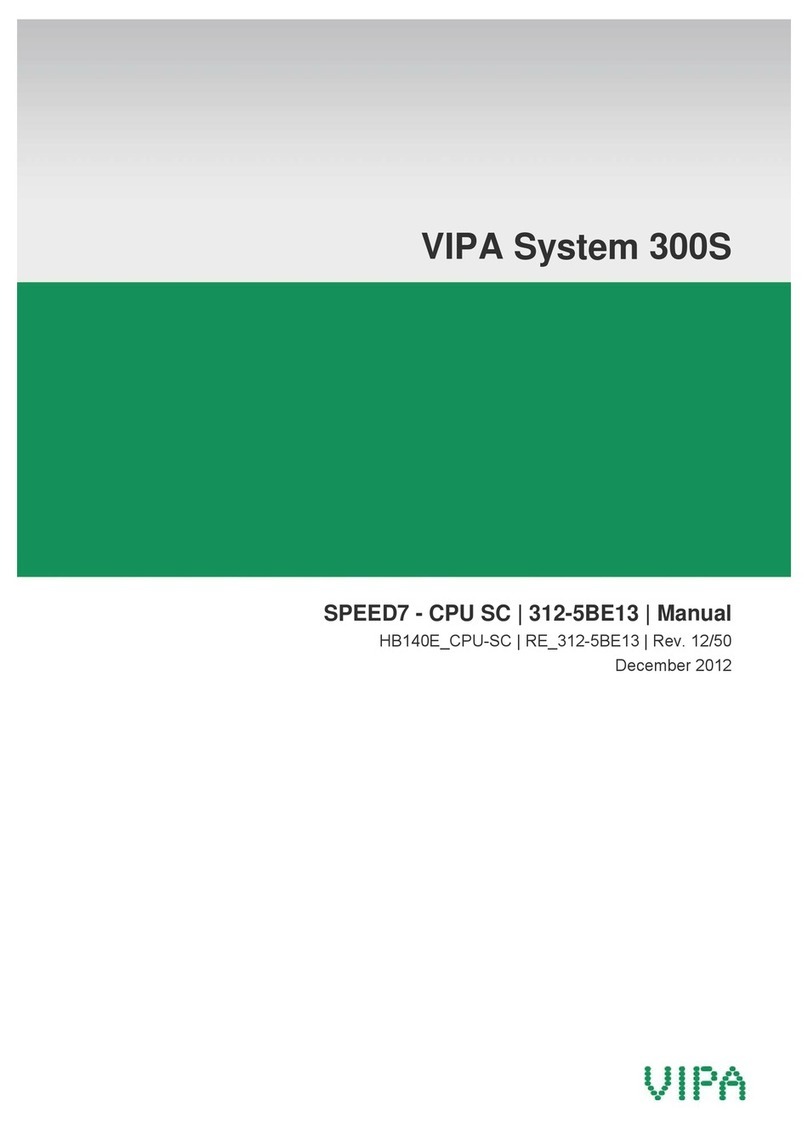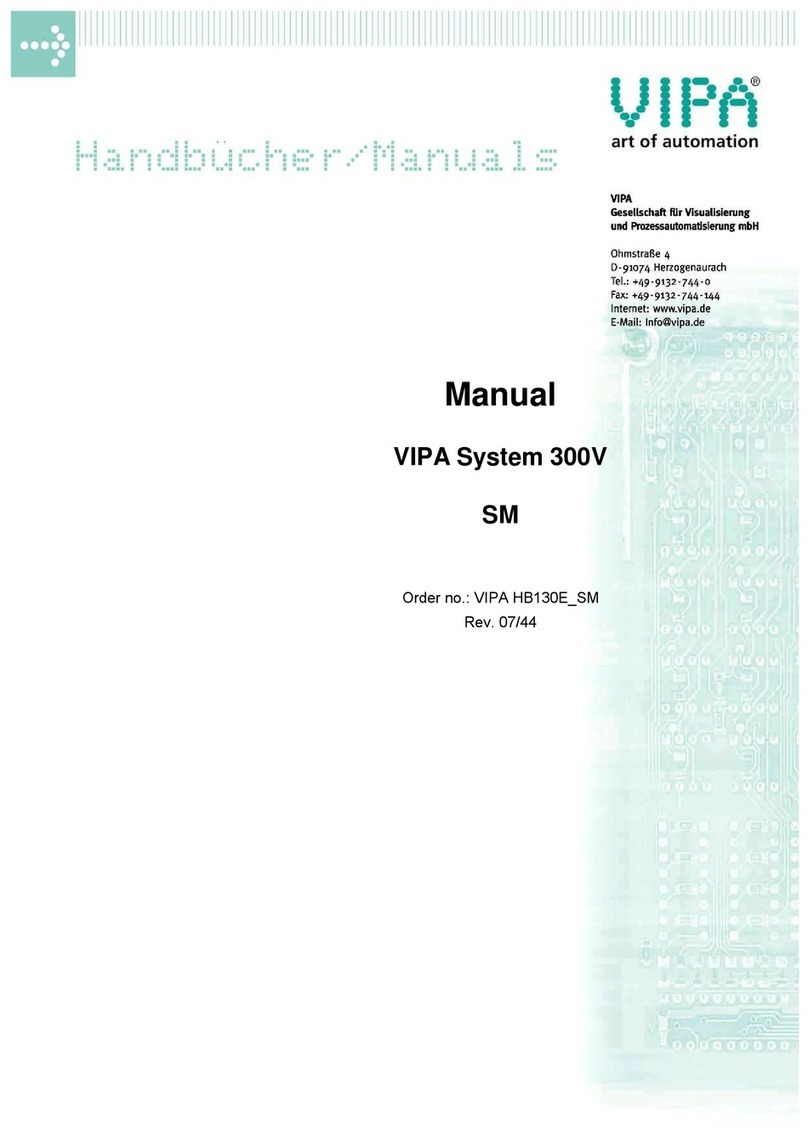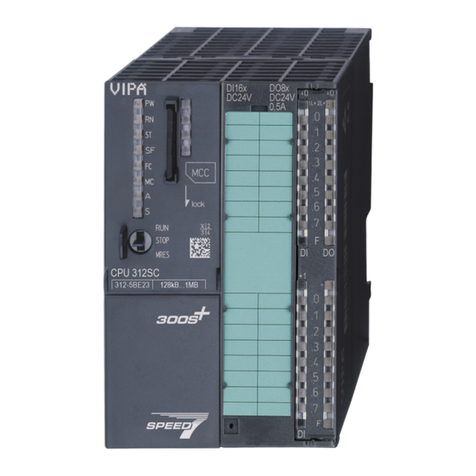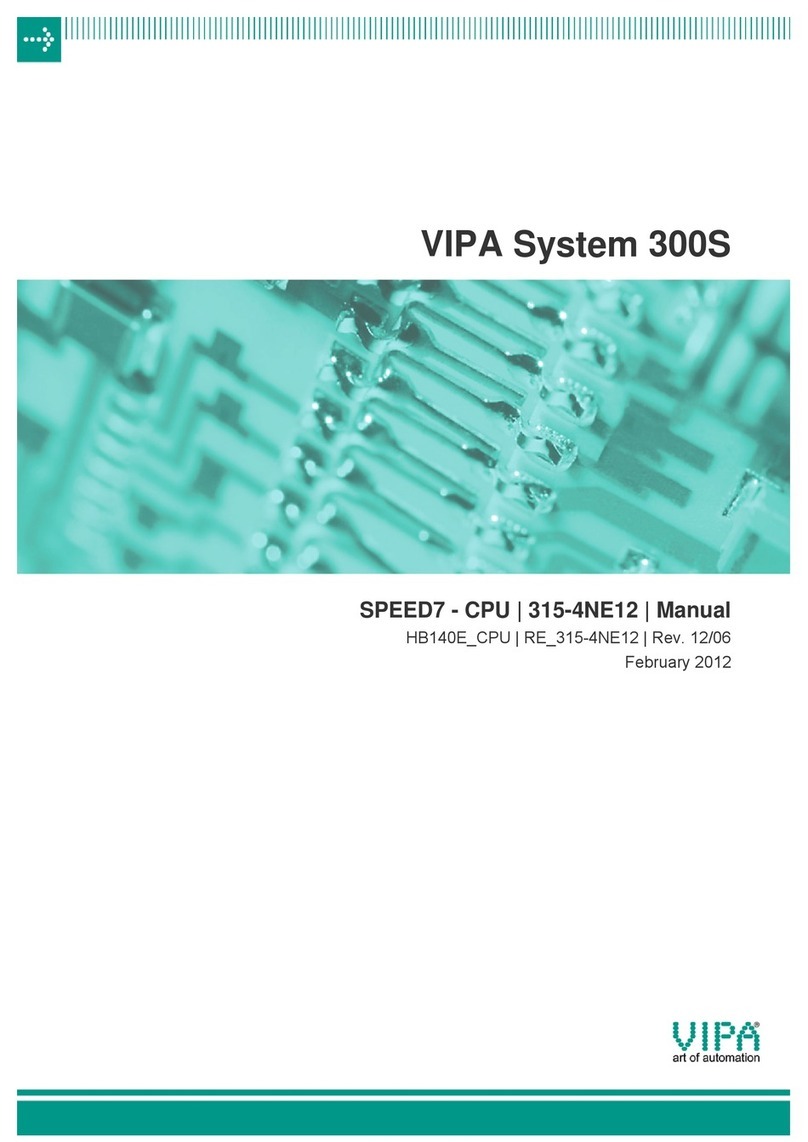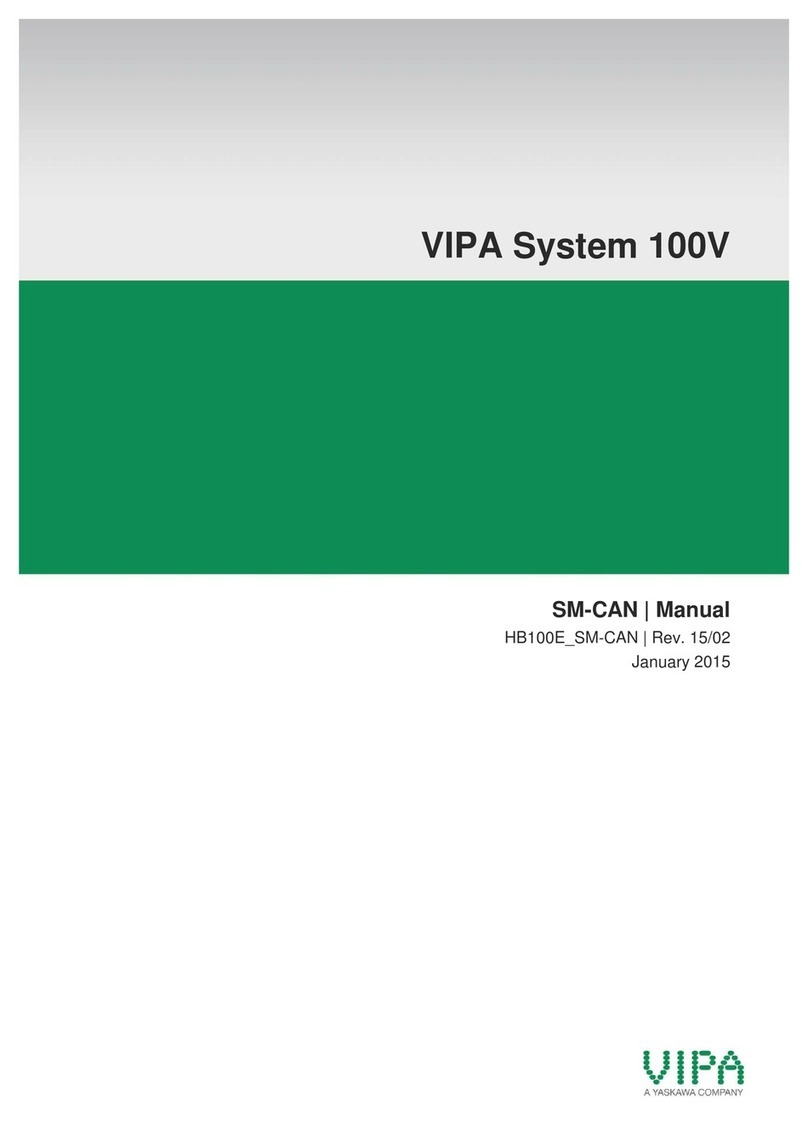
Manual VIPA System 300V Contents
HB130E - IM - Rev. 08/26 i
Contents
User considerations.................................................................................1
Safety information....................................................................................2
Chapter 1 Basics..............................................................................1-1
Safety Information for Users.................................................................1-2
General description of the System 300V..............................................1-3
Components.........................................................................................1-4
Chapter 2 Assembly and installation guidelines............................2-1
Overview..............................................................................................2-2
Installation dimensions.........................................................................2-3
Installation at the profile rail..................................................................2-4
Cabling.................................................................................................2-6
Installation Guidelines ........................................................................2-10
Chapter 3 Profibus DP .....................................................................3-1
System overview..................................................................................3-2
Basics ..................................................................................................3-3
IM 353-1DP00 - DP-V0 slave - Structure............................................3-12
IM 353-1DP00 - DP-V0 slave - Project engineering............................3-15
IM 353-1DP00 - DP-V0 slave - Diagnostic functions ..........................3-16
IM 353-1DP01 - DP-V1 slave - Structure............................................3-22
IM 353-1DP01 - DP-V1 slave - Project engineering............................3-25
IM 353-1DP01 - DP-V1 slave - DP-V1 services..................................3-28
IM 353-1DP01 - DP-V1 slave - Diagnostic functions ..........................3-30
Installation guidelines.........................................................................3-38
Commissioning...................................................................................3-43
Using the diagnostic LEDs.................................................................3-45
Technical Data...................................................................................3-46
Chapter 4 CANopen..........................................................................4-1
System overview..................................................................................4-2
Basics ..................................................................................................4-3
IM 353CAN - CANopen slave - Structure .............................................4-5
IM 353CAN - CANopen slave - Fast introduction..................................4-9
IM 353CAN - CANopen slave - Baud rate and module-ID..................4-13
IM 353CAN - CANopen slave - Message structure.............................4-14
IM 353CAN - CANopen slave - PDO..................................................4-16
IM 353CAN - CANopen slave - SDO..................................................4-20
IM 353CAN - CANopen slave - Object directory.................................4-22
IM 353CAN - CANopen slave - Emergency Object.............................4-63
IM 353CAN - CANopen slave - NMT - network management.............4-64
Technical data....................................................................................4-66
Appendix................................................................................................A-1
Index....................................................................................................A-1
